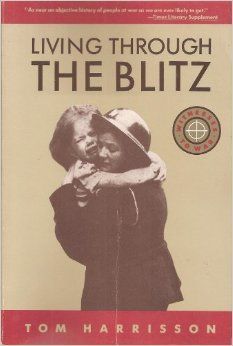
One of the co-founders of the Mass Observation project, Tom Harrison used many of the then-unpublished records of the organisation to put together this record of people's experiences on the British home front during the bombings of the Second World War- first-hand accounts recorded by people as they lived through the Blitz. Unlike earlier histories of the war, whether propagandist or simply patriotic, Harrisson's version doesn't close its eyes to the terrors and misery of the bombings, nor to the failure of the authorities to alleviate the suffering caused by the raids. Published posthumously in 1976, Living through the Blitz was part of the first wave of revisionism that washed clear the rose-tinting of earlier historians and made the blitz experience comprehensible for future generations.
Author
Tom Harrisson, educated in England at Harrow School and Pembroke College, Cambridge is described as having been a was an ornithologist, explorer, journalist, broadcaster, soldier, guerrilla, ethnologist, museum curator, archaeologist, documentarian, film-maker, conservationist, and writer. He conducted ornithological and anthropological research in upland Borneoand the New Hebrides from 1932-1935. Later, in 1937 with Humphrey Jennings and Charles Madge, Harrisson founded Mass-Observation, a project to study the everyday lives of ordinary people in Britain. A graduate of wartime officer candidate training at Sandhurst, Harrisson was inducted into the British Special Operations Executive during the Second World War and sent to Australia to help insert a cladestine unit into Borneo. His efforts to rescue stranded American airmen shot down over Borneo are a central part of The Airmen and the Headhunters. Harrisson's series The Borneo Story was broadcast by BBC television in 1957. he 1950s and 1960s Tom and Barbara Harrisson undertook pioneering excavations in the West Mouth of the Great Cave at Niah, Sarawak. Their most important discovery was a human skull in deposits dated by radiocarbon to about 40,000 years ago, the earliest date for modern humans in Borneo. The results of their excavations were never published in an appropriate manner leading to uncertainty and doubts as to their results; however, they are largely vindicated by results of excavations carried out by the Niah Cave Project from 2000-2003. Three films (amongst more made for British TV) record the Niah work[7] At the start of the Brunei Revolt in 1962 Tom Harrisson gathered and led a force of Dyaks 2,000 strong to contain the rebels and cut off their escape route to Indonesia. Harrisson traveled, lived and worked in the USA, the UK and France before dying in a road accident in Thailand. A biography, The Most Offending Soul Alive by Judith Heimann, gives a flavour of the strong feelings he engendered. A documentary Tom Harrisson – The Barefoot Anthropologist, hosted by David Attenborough, was broadcast on BBC4 in the autumn of 2006.